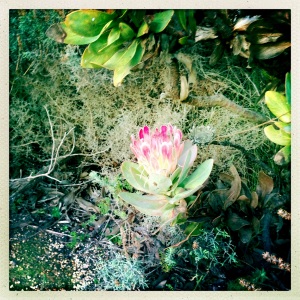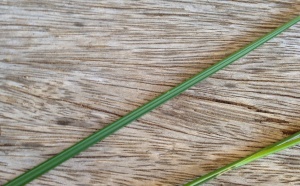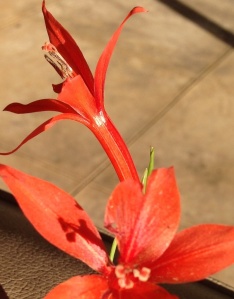Babinia Fragrens, the Harbinger of Spring
I got home on Tuesday morning and of course my first thought was to get up on the mountain and see new flowers though I didn’t achieve it until late in the day.
Every year as we reach the end of July, the coldest and wettest six weeks of the Cape year, a flower emerges that is for me the harbinger of spring. Like hearing the first cuckoo, I always note where and when I see the first Babinia fragrens. These crocus-like flowers cover the farm, they are everywhere – and the bulbs are particularly loved by porcupines. Last year I was running up a steep hill on the farm when I came across a 300 metre stretch of road where a happy porcupine had wandered up and dug up every single plant to munch on the bulbs. There are plenty to share and it was fun to think of him happily crunching not far from the house in the night as we slept.
Next up was this delicate white flower. I didn’t get a great picture of it – I think it’s a Cape Snowflake, to give it it’s common name, but will pop it into the research folder and see if we can get a better shot. These are quite common so I’m sure we’ll see more.
Opposite the Cape Snowflake, the water was tumbling in huge volumes down the waterfall in the evening sunlight – there’s been a lot of rain while I’ve been away.
One of the other wonderful sights of late winter and early spring is the Lebostemum. Another very common flowering shrub which flowers now and for several months. I have tried several times to transplant these to the garden, but they have a long fragile tap root and even very young ones invariably die. They are magnificent shrubs and flower in blue, pink or anything inbetween.
We wanted a good view of the sunset and went to the highest point of the farm on a road we don’t often run. This wonderful combination of Protea nerifolia and Protea nitida blocked our route at one point and forced a detour.
On the detour we came across this stunning Erica with little pink bell-like flowers in full bloom. Pink ericas with bell-like or urn-like flowers are like yellow daisies, there are an aweful lot of them and they are hard to tell apart. Thanks due to Jemima Chew who stood behind them, making them much easier to photograph!
The Cape Sugarbirds are in full mating feathers at the moment and they are having a lovely time in areas where the proteas are thickest. Their tails are so long they can hardly fly – that’s the males of course, the females look drab and take their pick. I haven’t yet managed to get a really good shot of one but hopefully it’s a matter of time.
I don’t believe we have posted and recorded this protea which is now in full flower.
Finally – another sunset. As dusk gathers and the sun sets you can see the mist from the Berg River gathering on the valley floor. No wind, the light is stunning and in the far distance table mountain and the whole of Cape Town is covered by a dark wall of cloud. The rain is coming.































